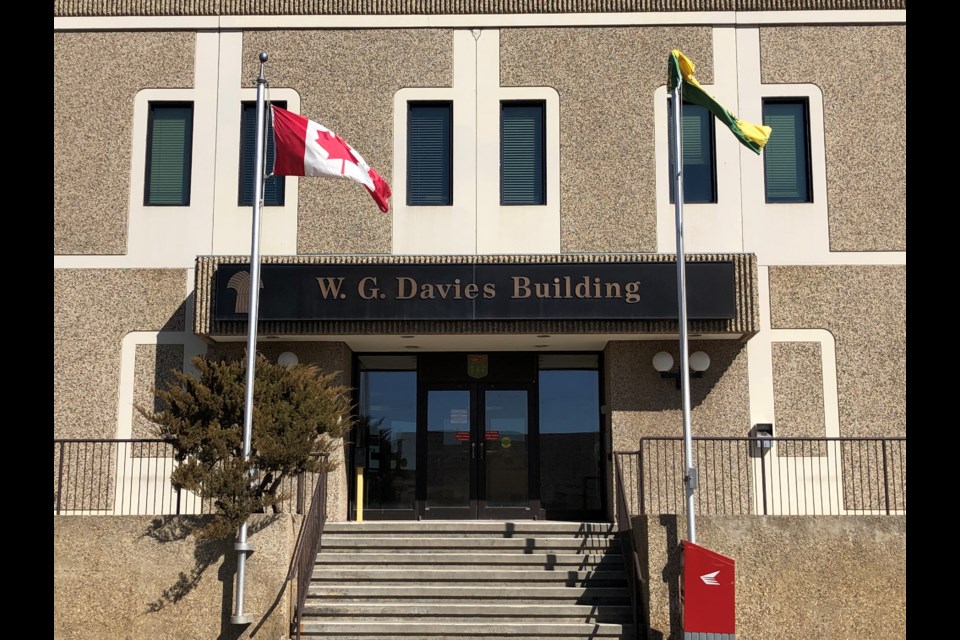Most people who commit crimes appear in court as part of regular legal proceedings, but some drug addicts can attend a special court program that applauds them for overcoming their addiction.
Square One Community Inc., in partnership with the Moose Jaw Crystal Meth Awareness Committee, hosted an online discussion on Nov. 25 about drug treatment court (DTC) during National Addictions Awareness Week.
Stacey Simms, co-ordinator of Moose Jaw’s DTC, and DTC graduate Chad Kobelsky spoke about their experiences with the program.
A different approach
Drug treatment court offers a therapeutic approach to address addictions, to help addicts find sustained sobriety and break the cycle of regularly appearing in court, said Simms, the DTC co-ordinator for seven years.
The first DTC originated in Miami, Florida, in 1989, and since then, about 3,500 programs now operate in the United States, while 22 programs run in Canada. Simms noted that interest in the program has been growing in Canada over the past few years.
Moose Jaw’s drug treatment court began in 2009 after two judges and several probation officers started the program. Legal Aid, defence lawyers, police or Crown prosecutors must refer people to the program. Due to limited resources, Moose Jaw’s DTC is capped at eight participants.
Drug treatment court uses a collaborative model that includes dedicated judges, Legal Aid, Crown prosecutors, nurses, addiction counsellors and others, Simms said. Furthermore, other organizations also participate, such as the John Howard Society and the Moose Jaw and District Food Bank.
“We couldn’t do it without all of the community resources,” she remarked.
Motivation to change
Crystal meth has been the biggest problem for some people during the last four years, while before that, it was cocaine and fentanyl, although alcohol is a common problem too, Simms said.
There can be more motivation for drug addicts to turn around their lives compared to other offenders, especially if they’re facing jail, she continued. Since participants must interact five days a week with support workers, people convicted of violent or sexual offences cannot participate.
Entering the program
Once the judge and Crown determine that a person should be referred to the program, that person will spend 30 days undergoing assessments.
“We’re not looking for the person to just kick all the drugs in the first 30 days. That is not realistic,” Simms said. Instead, the court will look at whether the person is trying to quit drugs, being honest about it and attending meetings.
After 30 days, the offender can enter guilty pleas to their offences to begin the program, taking 12 to 18 months to complete. However, people can decline if they’re not interested and would rather serve jail time.
Program phases
The first phase of DTC takes three months to complete and can be difficult, said Simms. Participants must attend programming five days a week and call Simms seven days a week. They must also meet with a counsellor once a week by phone for an hour.
Phase 2 takes two to four months and focuses on stabilizing participants and helping them refrain from relapsing. They must write a resumé, look for a job and determine their life’s course.
People will also participate in a prevention relapse initiative called the Matrix program. They spend six hours per week on it and attend either in person or online.
There is also a treatment strategy called Moral Reconation Therapy (MRT), which seeks to decrease recidivism among adult criminal offenders by increasing moral reasoning. Participants must spend four to six hours per week on this.
Participants must also see a probation officer once a week.
Phase 3 takes eight to ninth months to complete and focuses on helping participants maintain sobriety or ensuring they are in school.
Throughout the whole process, participants are given random urine screenings to ensure they are clean. Simms noted the program wouldn’t function without these random tests.
After completing the last phase, participants can apply to graduate.
“It’s amazing to see these people graduate,” beamed Simms.
Incentives vs. punishment
Drug treatment court meets on the first and third Thursdays of the month at the Moose Jaw provincial court building. A pre-court meeting is held among the court team and without the offender. The team speaks informally about the participants and whether they had a good or bad week.
“It’s really great. It’s not like normal court,” she stated.
Drug treatment court is more about incentives than punishment since the team will applaud people who have two good weeks and award them with doughnuts — participants love Maple Leaf Bakery — or a gift card, Simms continued. Other people receive verbal praise or extra time to see family.
If participants had a bad week or lied about their screening results, they could be forced to write the judge an essay, have increased supervision, receive a stronger curfew, help with community service, spend extra time at the detox centre or be sent to remand for a short stay.
While participants can also be discharged from the program, Simms noted that DTC has a great success rate.
“The only reason why I keep doing this job is because I love what I do,” she added. “It’s so, so fulfilling to see these people change — and really change. … A lot of graduates we don’t see them back in the system, which is really great.”




